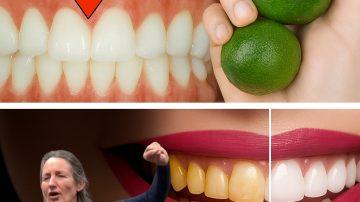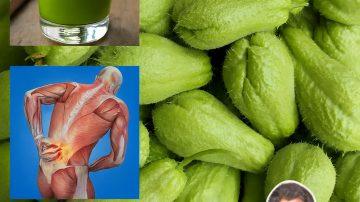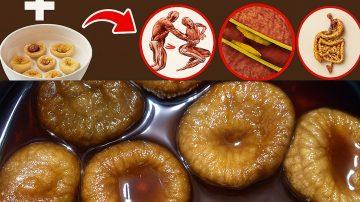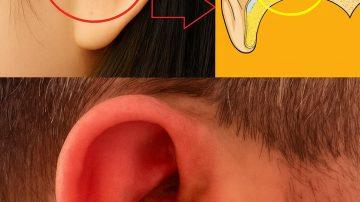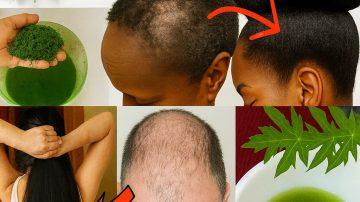Swollen legs (edema) are often caused by fluid retention, while joint inflammation (e.g., from arthritis) results from the body’s immune response. These home remedies focus on promoting circulation, reducing fluid buildup, and targeting inflammation.
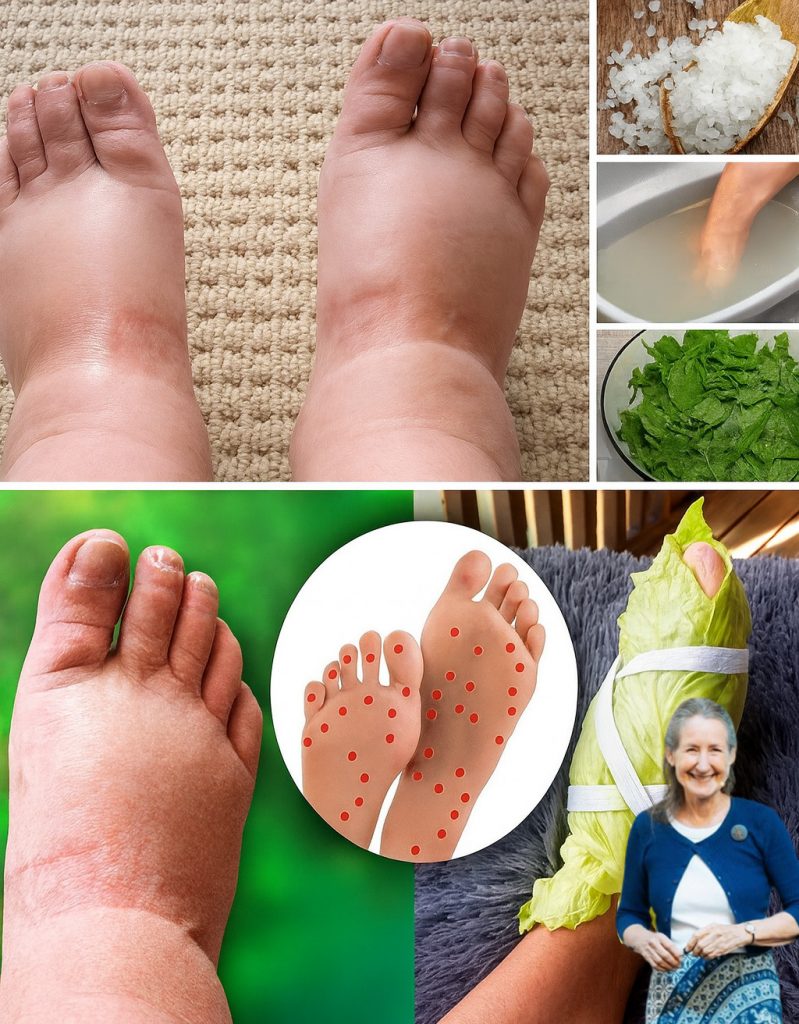
Disclaimer: If swelling is sudden, painful, or localized, or if joint inflammation is severe, seek immediate medical advice, as these symptoms can indicate a serious underlying condition.
A. Remedies for Swollen Legs (Edema & Fluid Retention)
These remedies focus on using gravity, compression, and natural diuretics to move excess fluid back toward the heart.
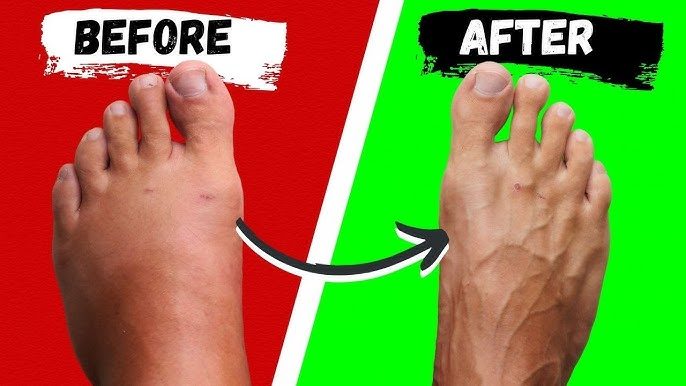
- Elevate the Legs Above the Heart
- How to Use: Lie flat on your back and prop your feet up with several pillows so they are positioned above the level of your heart. Alternatively, lie on the floor and place your legs straight up against a wall (Viparita Karani yoga pose).
- Benefit: Uses gravity to dramatically facilitate the drainage of pooled fluid and improve venous return, offering fast relief from swelling. Aim for $\text{15-30}$ minutes, $\text{3-4}$ times per day.
- Epsom Salt Soaks
- How to Use: Dissolve $\text{1-2}$ cups of Epsom salt (magnesium sulfate) in a bathtub or large basin of warm water. Soak your feet and lower legs for $\text{15-20}$ minutes.
- Benefit: Magnesium is easily absorbed through the skin, helping to relax muscles and potentially reduce inflammation and swelling. The warm water promotes circulation.
- Low-Sodium & High-Potassium Diet
- How to Use: Focus on whole foods and severely limit processed foods, canned soups, and fast food (major sources of sodium). Increase your intake of potassium-rich foods like bananas, sweet potatoes, spinach, avocados, and white beans.
- Benefit: Sodium causes water retention. Potassium helps balance sodium levels and encourages the kidneys to excrete excess fluid, reducing edema.
- Natural Diuretic Teas (Dandelion or Parsley)
- How to Use: Brew a tea using dried dandelion root or fresh parsley. Dandelion extract is rich in potassium, which makes it a gentle, effective diuretic.
- Benefit: Natural diuretics promote increased urine output, helping the body flush out excess fluid and toxins that contribute to swelling.
B. Remedies for Joint Inflammation & Pain
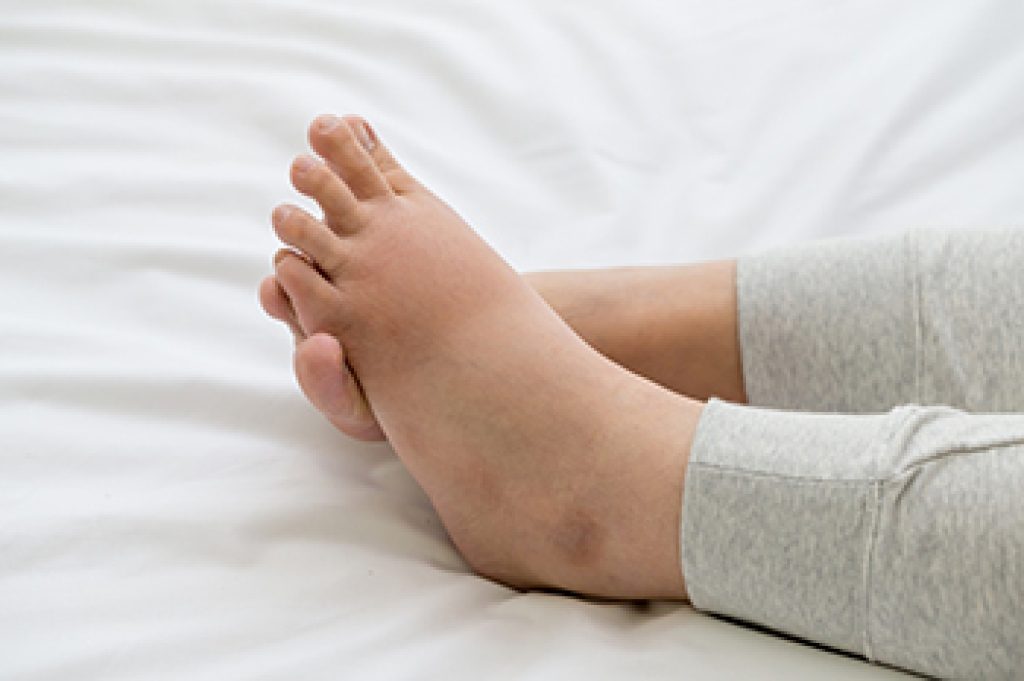
These methods target inflammation directly and provide symptomatic relief for sore joints.
- Turmeric (Curcumin) Consumption
- How to Use: Incorporate turmeric into your cooking daily, or mix $\text{1/2}$ teaspoon of ground turmeric with warm milk (Golden Milk) and a pinch of black pepper (to aid absorption of the active compound, curcumin).
- Benefit: Curcumin is one of nature’s most powerful anti-inflammatory compounds and has been shown in studies to reduce pain and stiffness associated with arthritis and general joint inflammation.
- Alternating Hot and Cold Therapy
- How to Use: Apply a cold compress or ice pack to the swollen joint for $\text{15}$ minutes to reduce acute inflammation and numb pain. Follow this with a warm compress or heating pad for $\text{15}$ minutes to relax stiff muscles and promote blood flow.
- Benefit: Cold restricts blood vessels to slow inflammation; heat boosts circulation to soothe stiffness. Avoid heat if the joint is already red and hot.
- Ginger and Anti-inflammatory Teas
- How to Use: Drink ginger tea daily, or consume Green Tea, which is rich in polyphenols (powerful antioxidants).
- Benefit: Ginger contains natural anti-inflammatory properties (gingerols and shogaols). Green tea’s antioxidants work systemically to combat oxidative stress, which is linked to chronic joint inflammation.
- Targeted Massage and Gentle Movement
- How to Use: Use firm, gentle strokes to massage the legs, moving upward toward the heart. For painful joints, apply a carrier oil mixed with a few drops of an anti-inflammatory essential oil like Eucalyptus or Frankincense (Boswellia).
- Benefit: Massage helps stimulate blood and lymphatic circulation to drain fluid away from swollen areas. Gentle movement (like stretching, swimming, or walking) prevents stiffness and strengthens the muscles supporting the joints.

